The Most Complete Galapagos Packing List: What to Pack for Galapagos (him & her)
Some links in this post may be affiliate links. If you click on them we may make a commission from qualifying purchases at absolutely no cost to you. Read our full Disclosure Policy here.
So you’re going to the Galapagos Islands. Amazing!!! You are going to LOVE IT! This volcanic island chain off the coast of Ecuador is a bucket list trip for sure, so you need to have the right stuff in your bags to make the most of every second. Our essential Galapagos packing list is exactly what you need to make your vacation the best it can be.
Trust us, you’re going to regret not having a great camera when you look back at your pictures. Or skipping that last snorkel stop because you were just too cold.
We’ve been twice, in different seasons, and we’ll share everything we learned about what to pack for Galapagos travel, including the mistakes we made.
Looking for more information on planning a trip to the Galapagos Islands? Check out our ultimate guide to land-based Galapagos travel or read these posts below for more detailed guides on each of the three most visited islands and our proven itinerary.
- Two-week Galapagos Islands land-based itinerary
- 16 Amazing Things to do in Santa Cruz (and most are free)!
- 11 Reasons you should visit Isla Isabela
- 17 Unforgettable Things to do in San Cristobal Island
Table of Contents
Things We Learned when Planning a Galapagos Vacation
There were a few things that surprised us while visiting the Galapagos and you’re going to want to take these into consideration while planning your vacation. For our second visit, we figured we knew what we were doing. It turns out there are some significant differences in what we needed depending on the time of year.
The Galapagos Islands have two seasons that should affect your packing. While the weather is warm year-round, which season you visit will alter slightly what should be in your bag. January to June is the warm, rainy season. It is hotter and sunnier with higher humidity as afternoon showers are common. July to December is the cool, dry season. The weather will be, not surprisingly, cooler and drier.
The islands are fairly dry and barren, not the lush tropical paradise you might be imagining (if you’re anything like me). Most trails are dusty and covered in sharp volcanic rock. Due to the scrubby nature of much of the plant life on the islands, there is often little to no shade on trails. Sunscreen, wide-brimmed hat and plenty of water are essential as well as walking shoes with good support and soles.
The main islands are surprisingly populated and have everything you might need available (as long as you’re not picky about brands). If you run out of, or forget, something you will be able to find it. But it will cost you. As you can imagine, transporting goods to these remote islands is not a cheap venture. Pack wisely!
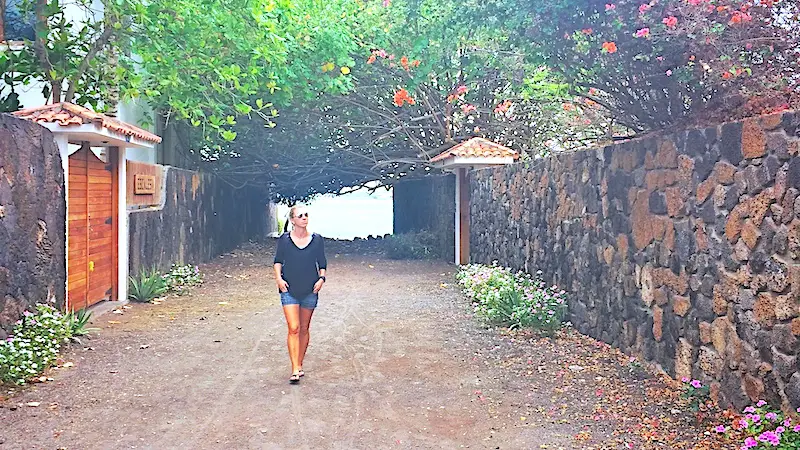
Our Essential Galapagos Packing List
Before You Go
Valid passport that doesn’t expire for at least 6 months after the date you are leaving Ecuador.
Vaccinations – Check with your local travel clinic or doctor to find out which ones you need. If you are planning on combining the Galapagos Islands with other parts of Ecuador, consider this too.
Travel insurance – It is actually mandatory to have travel insurance to enter the Galapagos Islands. Aside from that, it’s also a really good idea. You will be active every day of your vacation. From climbing over sharp lava rocks to snorkelling with sharks, there are plenty of opportunities for something to happen. We always use World Nomads. They cover a wide range of both travel and health issues at a reasonable price and we’ve have had excellent experiences with making claims.
Cash for park entrance fees – There are ATMs on Santa Cruz Island and San Cristobal Island but you will need to pay some fees before you get to those. If you are arriving at Baltra Airport, you will be spending $130 in cash before you reach the town. US Dollars are Ecuador’s official currency.
Return ticket confirmation – Along with travel insurance, proof of a return ticket is necessary to enter the Galapagos Islands. Your departure date will be entered onto your visa at either Quito or Guayaquil airport before you check in for your flight. Technically, you need proof of your itinerary but we’ve only ever been asked for the flight information.
Galapagos Packing List: Essential Items
What should I pack for the Galapagos Islands? These items will make a significant impact on how much you are able to enjoy your trip, and remember it for years to come.
CamelBak daypack – We love our CamelBak backpacks (or another hydration pack). This one holds 3 litres of water, making it sooo much easier to stay hydrated while hiking in the hot equatorial sun, and has enough space for your supplies for the day.
Re-usable water bottle – If you don’t want a hydration pack, make sure you pack a reusable water bottle. In 2018, Ecuador made it illegal to bring single-use plastics into the Galapagos Islands. Also, every place we stayed had free drinking water available so why pay for water at the store? You’ll definitely want a high-quality, insulated bottle to keep your water cold in the equatorial sun.
GoPro – This is a trip of a lifetime right? So you’re going to want some incredible memories to take home with you. The majority of the Galapagos’ biodiversity is underwater so having a waterproof action camera is a must for all those snorkelling, diving and boat excursions.
Floating handle for GoPro – Because that GoPro is a hefty investment, you’ll want a floating handle. These things are fantastic! They’ll keep it from sinking if dropped, have a handy wrist strap and ours even opens to a waterproof case for small change and such.
Waterproof case for phone – If you don’t want to, or can’t, invest in a GoPro then buy a waterproof case for your phone. I purchased a Lifeproof case for my iPhone before our first Galapagos trip and took amazing underwater pictures while snorkelling. It’s trickier than the GoPro to hold and take photos underwater and I left it on the boat for the deep waters at Kicker Rock, but it’s a good option for shallow areas. Others use these waterproof pouches and are happy.
Good camera with a zoom – One thing I left at home for our first trip and regretted was my camera with a good zoom. It’s true that you can get up close and personal (while maintaining a 2-metre distance) from much of the wildlife, you will still want to be able to zoom in on small details, or on the birds in the rocks. I was really happy to have it with me the second time around.
Sunhat – The equator line actually cuts through the Galapagos Islands so the sun is strong. Super strong. Bring a hat that has a wide rim to cover neck, ears and face. Remember to find one in a light, breathable fabric or you won’t want to wear it.
Sunglasses – Same thing goes. Your eyes need to be protected from the sun’s rays. Plus, nobody wants squinting tan lines around their eyes!
Reef safe sunscreen – Sunscreen is an absolute must but buying biodegradable, environmentally-friendly stuff is really important. People often complain about reef-safe creams being thick and leaving a film. However, this reef-safe sunscreen provided such great protection and was easy to rub in so we all ended up using it all the time.
Lip balm with SPF – I don’t know about you but I always get sunburnt lips and they suck! If you’re prone to cold sores this is especially important to keep them at bay in the heat.
Drybag – You will be spending a LOT of time in boats, on beaches and in the water so you need to keep your things dry. I have a dry bag in my backpack every day to use when we are on a boat trip, to hold my valuables at the beach or dock or in case of the odd rain shower. I can’t tell you the number of times it has saved me!
Waterproof watch – We both use our Garmin watches. They are both fitness trackers and smartwatches that are also waterproof. We don’t have to worry about forgetting to take them off before we snorkel and then get lost in the sand. Terry’s even has a hiking app that will guide him back to the start of a hike – perfect for exploring unknown territory! They also update the time by GPS so we don’t get confused with crossing time zones. I have the Vivoactive 3 and Terry is really happy with his Fenix.
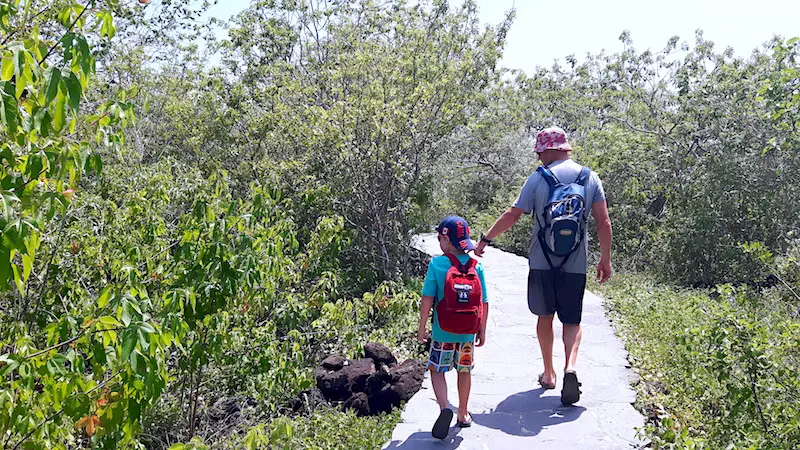
Galapagos Packing List: Keep Happy and Healthy
Seasickness pills – The waters around the Galapagos Islands are notoriously rough. Make sure you pack some seasickness pills, like Dramamine, for the boat rides and inter-island ferries. If you prefer not to take medication, try some motion sickness bracelets like these.
Imodium – Traveller’s diarrhea and other stomach issues are quite common in South America and that’s a sure way to suck the fun right out of your trip. It’s also a good idea to ask your doctor for some antibiotics to have on hand just in case. Four out of our group of five had issues while in the Galapagos Islands. In addition to the Imodium I was handing out like candies, I was able to get medication at a local pharmacy but it required Spanish and wasn’t cheap.
Polysporin – Those lava rocks are crazy sharp and I’m pretty sure the sand is about 60% sea lion poop. Cuts are likely and it’s just plain smart to have some anti-bacterial cream to put on them.
Basic first-aid kit – We carry Band-Aids, blister pads, alcohol wipes and gauze in addition to what’s listed above. It takes up next to no space and covers us for any basic cuts and scrapes. It came in super handy on our past trip between bike wipeouts and lava rock injuries!
Bactine or Aftersun – Bactine is a medicated spray that is actually perfect for a number of things that could happen in the Galapagos Islands. During our time there we used it for sunburn, a wasp sting and nasty looking cuts. Aftersun and Afterbite will do too.

READ THIS POST:
9 Best Things to do in Quito, Ecuador
Galapagos Packing List: Items for Snorkelling and Swimming
Waterproof sandals {his and hers} – The Galapagos Islands are volcanic so just about every beach has its share of sharp volcanic rock. Waterproof sandals with a good sole will not only be great in the water but also for easy hikes or walking about town.
Cover-up – Save the sunscreen and cover-up from the powerful sun. For women, I had a light, loose tunic shirt that was great to cover up on the beach or boat, but also perfect with leggings in the evening. Terry was happy to use his loose-fitting rashguard.
Rashguard {his and hers} – Whether you want protection from the sun or freezing cold water, a rash guard is essential. If I wasn’t on a tour that provided a wetsuit, I wore my rashguard to keep me a little warmer. In December the water was freezing and the wetsuit really important. In April, the rashguard did a good enough job near the shore (deep water is another story).
Snorkel gear – Day tours will provide snorkel equipment but it’s not the best. Between fogging, leaking, and scratched lenses, it can be a pain. Plus, there are loads of places with amazing snorkelling that don’t require a guide. And they’re free if you don’t have to pay for rental gear. My family all had full-face masks and loved them.
Travel towel – I never travel without my microfibre travel towel. It takes up a fraction of the space a regular towel does, dries quickly and is large enough to use as a beach towel. Perfect to throw in your bag for the beach or a day tour. We’ve had these UltraLite PackTowl in Beach size for years and they’re still going strong!
Swimsuit x2 – It’s highly likely that you’ll be in the water every day. Bringing two bathing suits means that you don’t have to sit around in a wet one because nobody likes that!
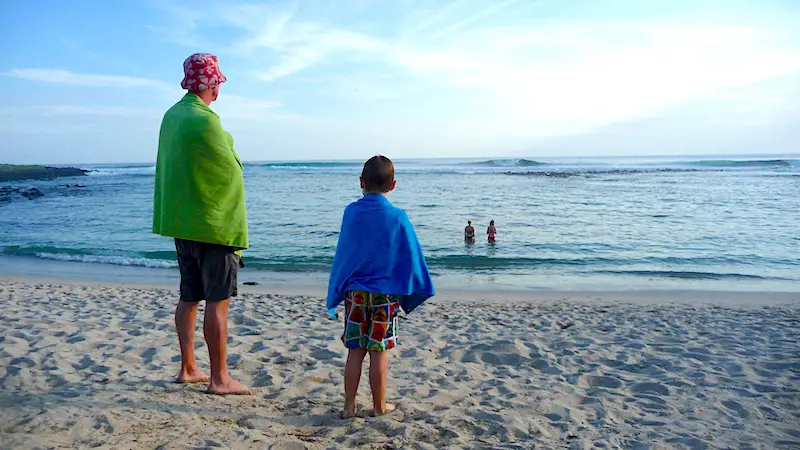
Packing for Galapagos Islands: The Best Clothes
Deciding what to wear in the Galapagos is no easy feat. Trying to find the balance between not packing everything and leaving behind something you regret. We were really surprised, and ill-prepared, by how cool the Galapagos Islands were during our first December visit. And then they surprised us again by being significantly hotter in March! Here are our suggestions for what to wear in the Galapagos:
Tanks and t-shirts – Light, short-sleeved (or sleeveless) and comfortable are key. Merino wool is the traveller’s dream fabric. It keeps you cool in the heat, warm in the cold, dries quickly and is resistant to becoming stinky or creased. It’s also incredibly soft and comfortable.
Shorts – The Galapagos Islands are casual. Take shorts that are comfortable and light so that you’ll be comfortable around town, heading to the beach or sitting in the sun on a boat for a couple of hours. No matter what season you travel to the Galapagos, it will be warm enough for shorts in the day.
Light, quick-dry performance top {his and hers} – Pack one top that is performance wear for hiking. A workout top in sweat-wicking, quick-dry fabric is the ideal. We prefer short sleeves or sleeveless for the heat but some like long sleeves for the sun protection.
Quick-dry, comfortable hiking shorts {his and hers} – One pair of shorts should be perfect for hiking or biking. Stretchy, comfortable, performance fabric will help you move across those lava rocks and climb up to the lookouts for incredible views.
Long sleeved shirt – The evenings will cool and you’ll want at least one long-sleeved shirt. For women, you might want a longer tunic to pair with leggings. In the warmer season, a light t-shirt will be fine but in the cooler, dry season you might consider a light sweater.
Long pants {his and hers} – The same goes for the legs. One pair of hiking pants (or leggings) would be perfect for the odd evening that’s a little cool and daytime hiking. It’s also ideal to keep the bugs bites to a minimum. These pants are rain and stain resistant, and have UV protection.
Rain jacket {his and hers} – A light rain jacket is a good idea for any time of year. The highlands are particularly susceptible to rain and, of course, during the rainy season but we had some rain during our December visit too – the supposed dry season. I just have a cheap one from Costco but I wish I had a good quality rain jacket every time it rains!
Performance socks – Two pairs of socks should be fine as you’ll be spending a lot of time in sandals. Bring proper hiking or performance socks for comfort, sweat-wicking, quick-drying and anti-odour properties.
Dress or skirt {hers} – For the women (or men too, no judging!) pack one dress or skirt that is versatile. I LOVE my Columbia dress! Mine’s been discontinued but this one’s very similar. It’s made of performance fabric and perfect for throwing over a bathing suit and hiking to the beach but also nice enough to wear out for dinner. Did I mention it has pockets?
Comfortable hiking shoes – Whether you have actual hiking shoes or running shoes, you need to have good ankle support and a firm sole. The trails are uneven and the rocks can really poke you through your shoes.
Flip flops – A pair of basic black flip flops or sandals takes up next to no space and are great for the beach, a quick trip to the store or dinner.
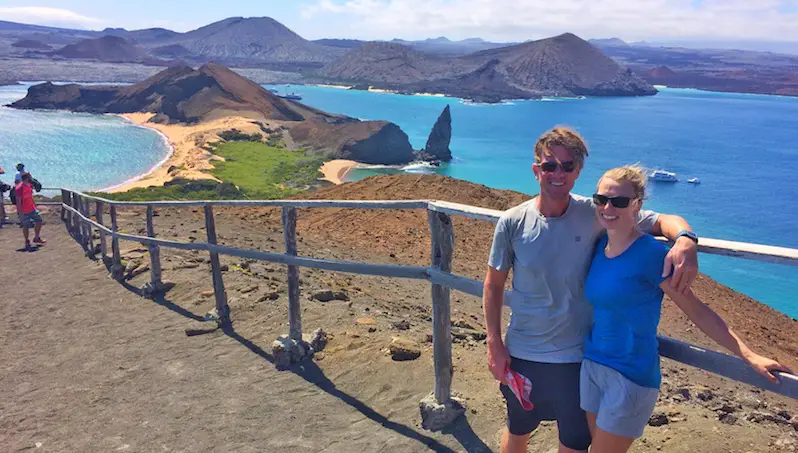
Miscellaneous Travel Items You Don’t Want to Forget
eReader – The internet is really bad in the Galapagos Islands. Realistically, they’re so remote it’s impressive they have any at all but it’s a lesson in frustration to try to do anything on it. However, between flights and ferries, you will have plenty of downtime. Load up your eReader before you go. It takes up less space than one book and doesn’t kill any trees! Win-win. Some are even waterproof.
Tea Tree oil – This magic little oil has antibacterial, anti-fungal and anti-inflammatory properties. Use it for hand sanitizer, cleaning and healing wounds, acne, rashes, bug repellent, mouthwash and more. Check out this article to learn more about how to use Tea Tree Oil safely. I always have some in my bag.
Argan oil – Argan oil is my favourite item to use as both a skin moisturizer and hair conditioner. It works great and takes up so much less space in my luggage.
Travel clothesline – We didn’t have one but wish we did. The shower rod, towel rack and chair backs were constantly covered in wet swimsuits, towels and clothes.
Travel adapter – Ecuador uses the same electrical sockets as North America. Depending on where you are travelling from this may or may not be something you need.
Spare memory cards – There’s no way around it. You will be taking a LOT of pictures and videos. The worst thing would be to run out memory space in the middle of your vacation.
Binoculars – Unlike some places, there will be many up-close encounters with wildlife in the Galapagos so you may not feel the need for binoculars. However, if birdwatching is important to you then binoculars definitely need to be on your list. My parents were definitely happy to have theirs. The waterproof feature of these ones means you can feel confident using them on the boats.
Headlamp/flashlight – The streets are dark at night and paths are uneven. Having a flashlight will be a big help to get home after dinner, particularly if your accommodation is a little further from the main streets of town.
Protein bars or snacks – We like to pack a few protein bars or nuts with us and put a few in the daypack when we head out for the day. It saves money and time wasted searching for something to eat. Everything becomes a lot less fun for me when I’m hungry!
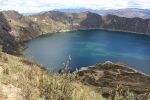
READ THIS POST:
Laguna Quilotoa Day Trip: How to make it the best experience
Seasonal Items to pack for the Galapagos
We mentioned the two seasons earlier. January to June is the warm and wet season. July to December is the cool and dry season. However, during our December visit, we found the evenings to range from cool to cold and we often wore every layer we had packed. We also had one rainy, overcast day and a few damp evenings. When we visited the Galapagos Islands in March, we never needed our sweaters at night and had absolutely no rain. March was definitely hotter than December with higher humidity.
Light jacket – While we recommend a rain jacket year-round, if you are visiting in the cooler months you might consider something with a little insulation. Keep it light and packable though!
Sweater – A light sweater will likely be used most evenings during the cooler months. Don’t pack anything bulky or too heavy. Layers are better.
Jeans – During our December trip, we wore our jeans most evenings. In March, it was too hot and I think I wore mine once.
Insect repellent – If you read reviews from people who travelled during the dry season, they might tell you that bug spray isn’t needed in the Galapagos Islands. We would have said the same after our first trip. However, we can now confidently say that if you travel during the warm, wet season you will want to pack some insect repellent.

There you have our Galapagos packing list. After visiting the islands on two separate occasions, during two different seasons, we feel confident that this list will have you covered! If you think we’ve missed something, or you have any questions, drop us a comment below!
Are you still looking for more information on the Galapagos Islands? Check out these posts below for more detailed guides on the three most visited islands and our proven itinerary.
- The Ultimate Galapagos Islands Travel Guide
- Two-week Galapagos Islands land-based itinerary for independent travel
- Island Guide: 16 Amazing Things to do in Santa Cruz (and most are free)!
- Island Guide: 11 Reasons you should visit Isla Isabela
- Island Guide: 17 Unforgettable Things to do in San Cristobal
Did you find this post helpful? Save it for later on Pinterest!
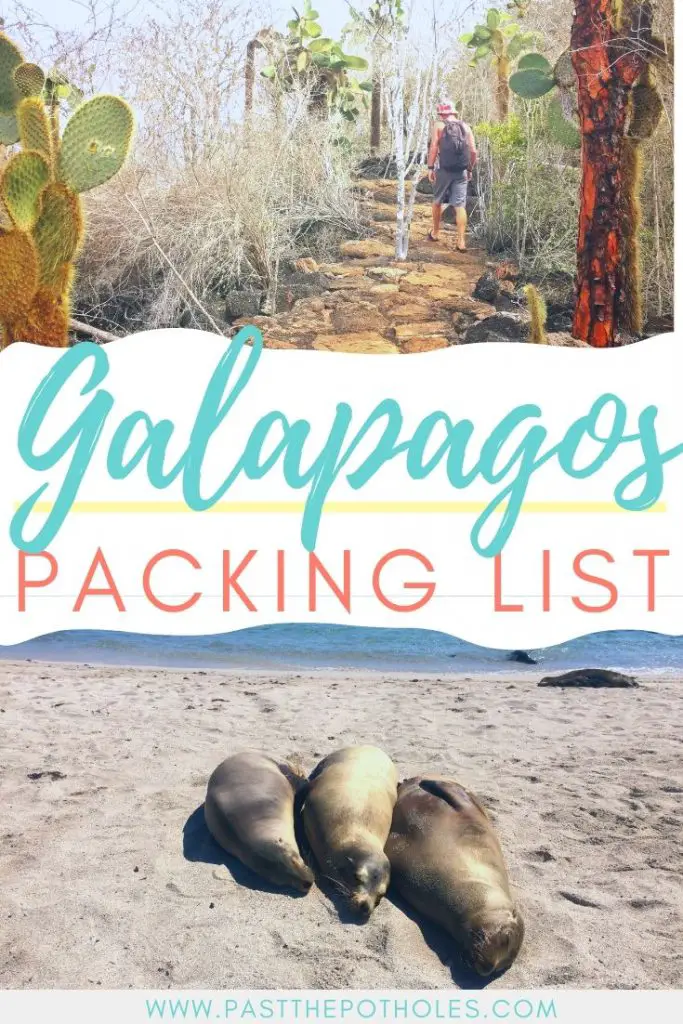
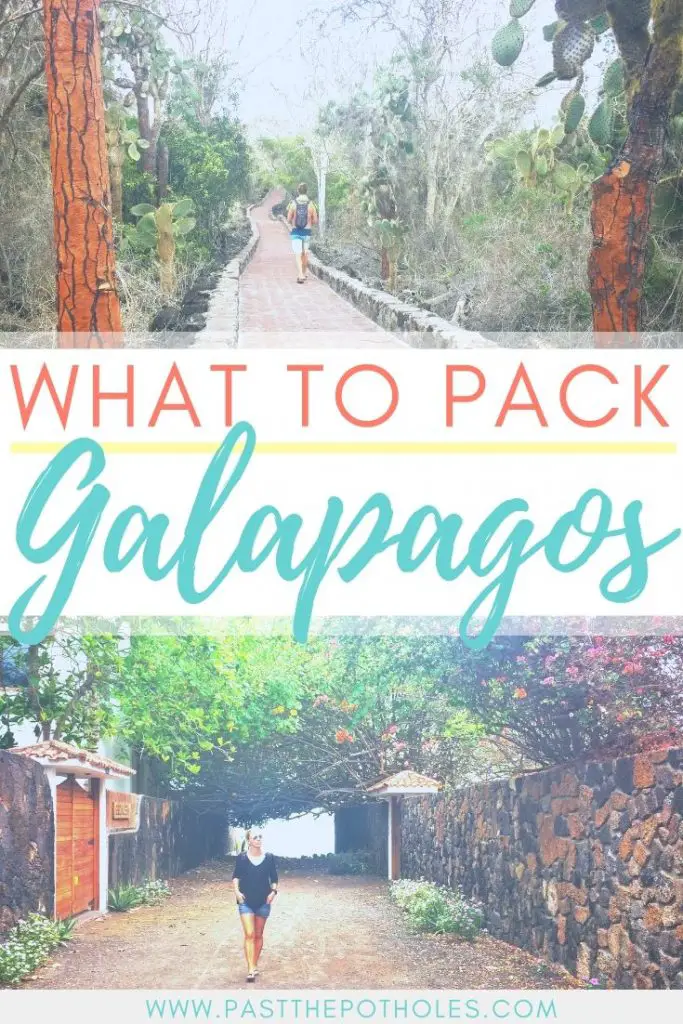
Return to all our posts on Ecuador now.
Ready to start booking? Use our favourite travel tools to save time and money!
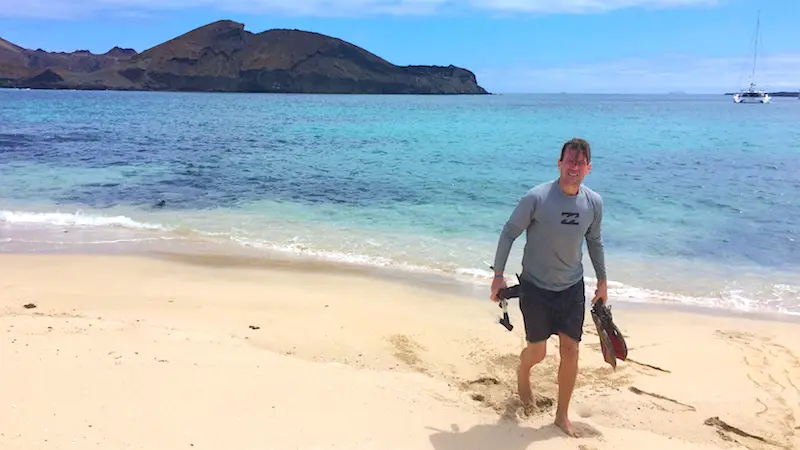


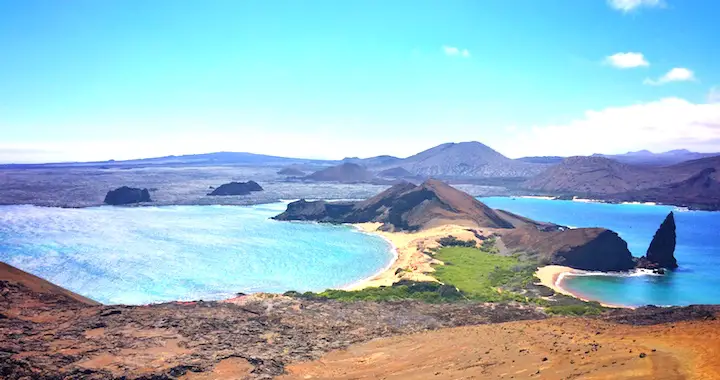
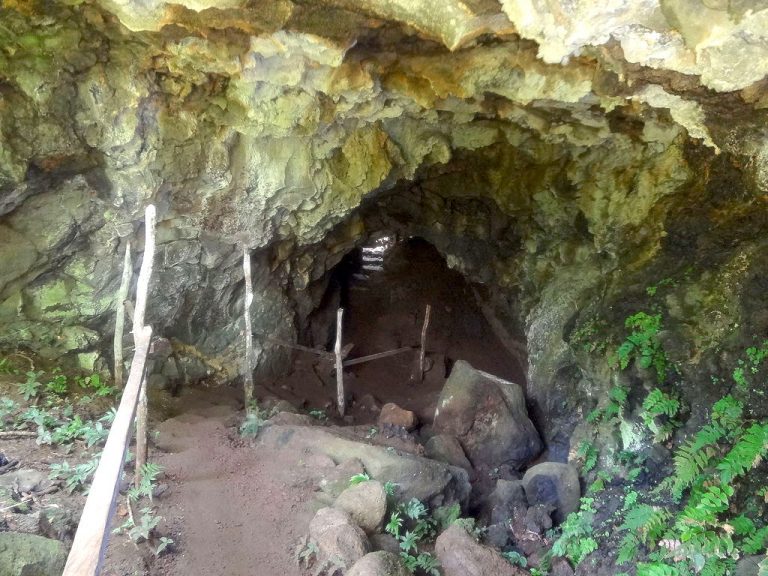
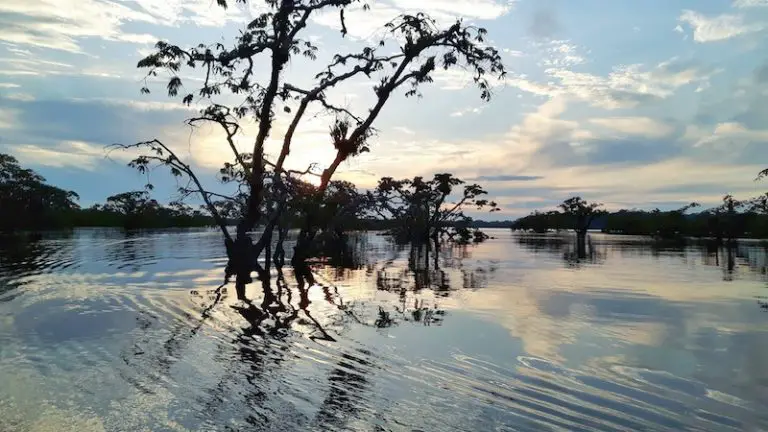
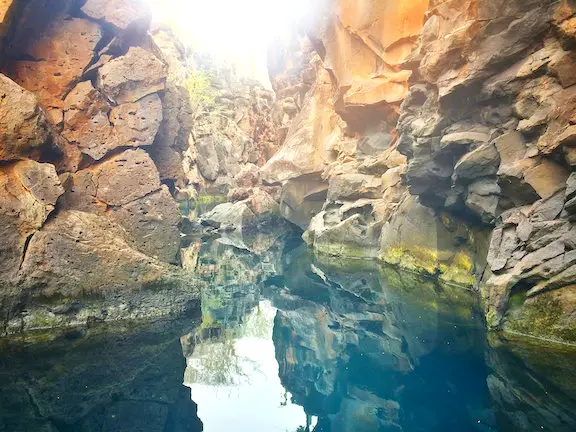
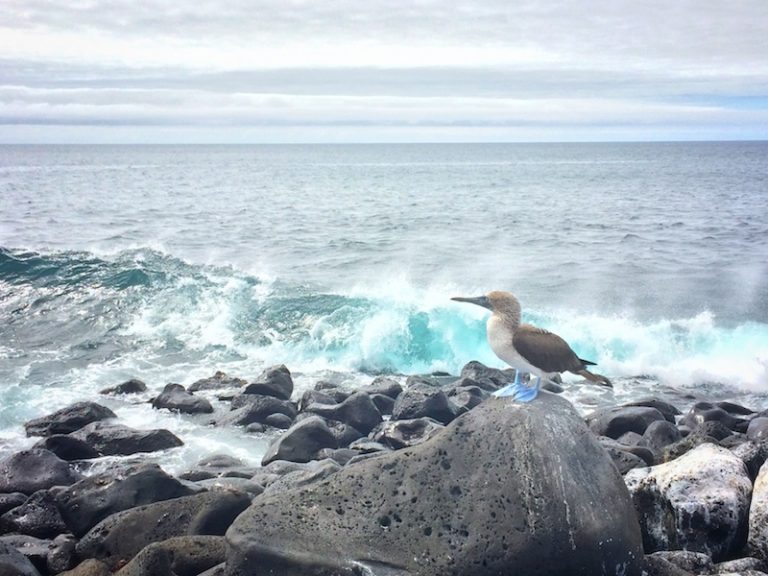
Hi Claire – this is definitely the most thorough guide about the Galápagos Islands, I’ve come across- thank you! I’m going to the Galápagos at the end of December 20-29, for the holidays. And I get cold very easily. I’m not sure whether to follow advice for packing forces the cool/dry or warm/wet and was wondering if you have any insight that you could share? Thank you!!
Hi,
December is when the currents are changing so I think it is a little unpredictable. For us, it was cooler (significantly cooler than when we returned in March) and we had a couple of wet evenings and one rainy day. The days are warm year-round so shorts and t-shirts for sure but we needed sweaters and rain jackets (or a light jacket) for a few evenings. It was never actually cold but with the island breezes and dampness, I was chilly in the evenings (and I get cold very easily too). Have an amazing trip!